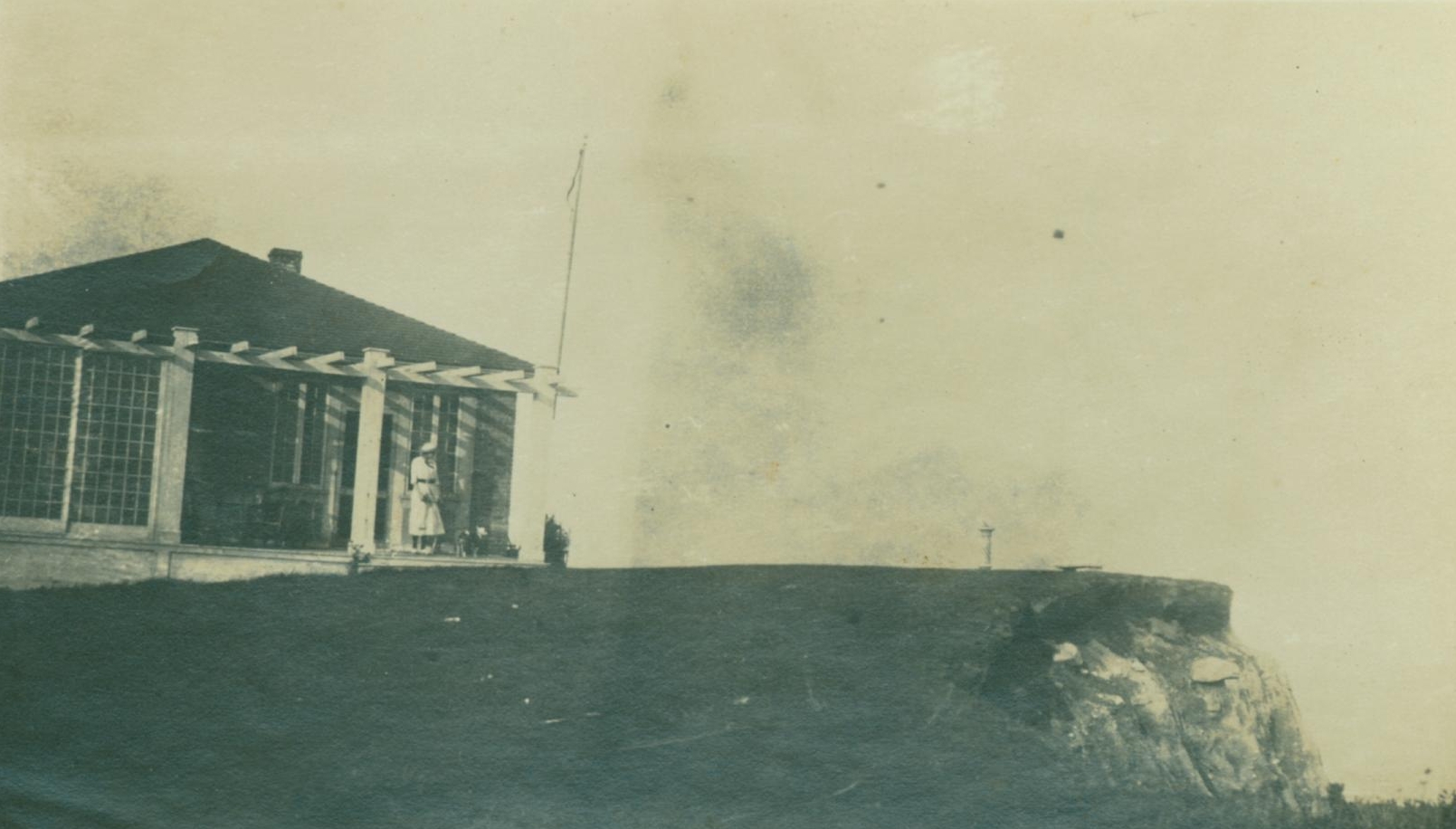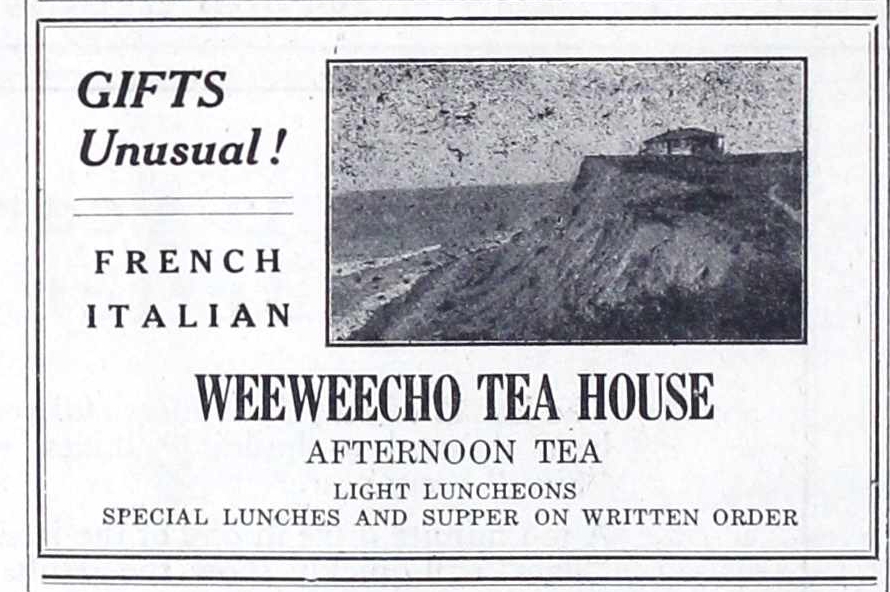
In the 1910s and 1920s, tea rooms and tea houses dotted America’s new motorways, providing tea and light refreshments to traveling tourists. On the eastern end of Long Island, motorists driving through Montauk could find refuge at the Weeweecho Tea House situated on the southern bluffs overlooking the Atlantic Ocean. At that time when Montauk was minimally developed, afternoon tea and light luncheon at the Weeweecho would have provided respite for travelers driving through the sparse and wild landscape.
Nearly all tea rooms in America during this period were owned by women. These establishments surfaced at a time when women were discouraged from dining publicly if unaccompanied by a male and when certain establishments prohibited women from dining at all. Tea houses, like the Weeweecho, would have provided a welcoming space for women to dine and gather for tea and light meals. Early tea rooms were opened up by women who designated a room in their homes or set up tables in their gardens and prepared food for guests. It was a way for women to enter the workforce, continuing domestic work like cooking and hosting in exchange for money. This marked a shift when women began moving into the business world as owners and proprietors of their own enterprises.
Miss Elizabeth Thompson Agnew (1863-1955) opened the Weeneecho Tea Room on July 4th, 1919. The tea house was located between the ranch and the point on the bluffs of Old Montauk Highway. An advertisement from the 1920s directs travelers to take the “straight road to Montauk Light House.” The tea house opened for the season each July and would stay active as late as November. The Weeneecho Tea Room, later named the Weeweecho Tea House, served afternoon tea, special lunches, and supper with advance notice. “You could go in and it was more or less just a tea house, it wasn’t a restaurant,” Elizabeth Joyce Job, a Montauk resident recalled in an oral history interview. “It was tea and small desserts and what have you.” The tea house remained in operation through the 1930s.

Elizabeth Agnew was the daughter of Dr. Cornelius R. Agnew, a prominent New York ophthalmologist and owner of one of the Montauk Association houses. Each summer the Agnew family returned to their Montauk cottage on the bluffs of Ditch Plains, where Elizabeth, a seasoned and independent traveler, would continue to visit throughout her life. Before opening the Weeweecho Tea House, Elizabeth was an organizer of The Girls’ Friendly Society Vacation House in Huntington Harbor. The society offered furnished dormitory-styled bedrooms and apartments, a dining room, laundry services, a library, and bathing beaches on seven acres of property with a view of the harbor. The vacation house was created for “the pleasure and comfort of that class of girls who are compelled to labor in shop or factory and whose means are such as almost to preclude the possibility of a vacation were it not for such an institution” (The Long-Islander, June 22, 1900).
Elizabeth’s entrepreneurial spirit benefited her own independence while providing a space for other women travelers to gather and recharge, even those without the means to do so.



Reply or Comment